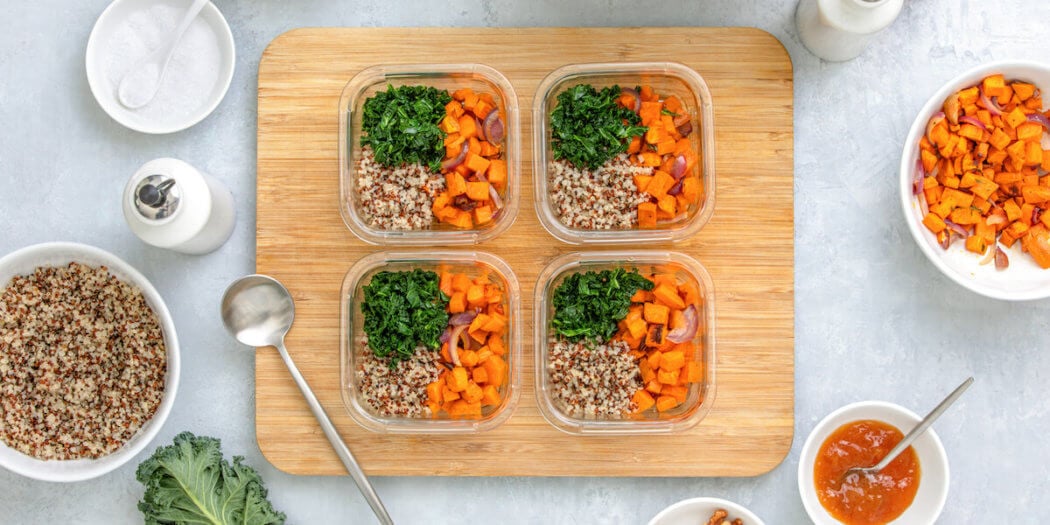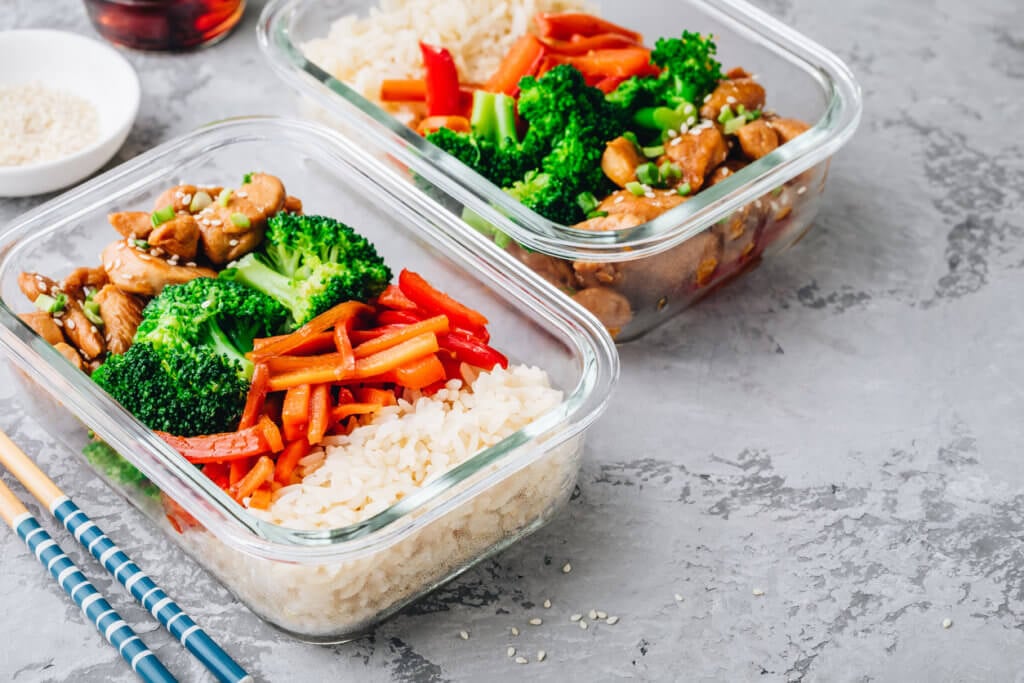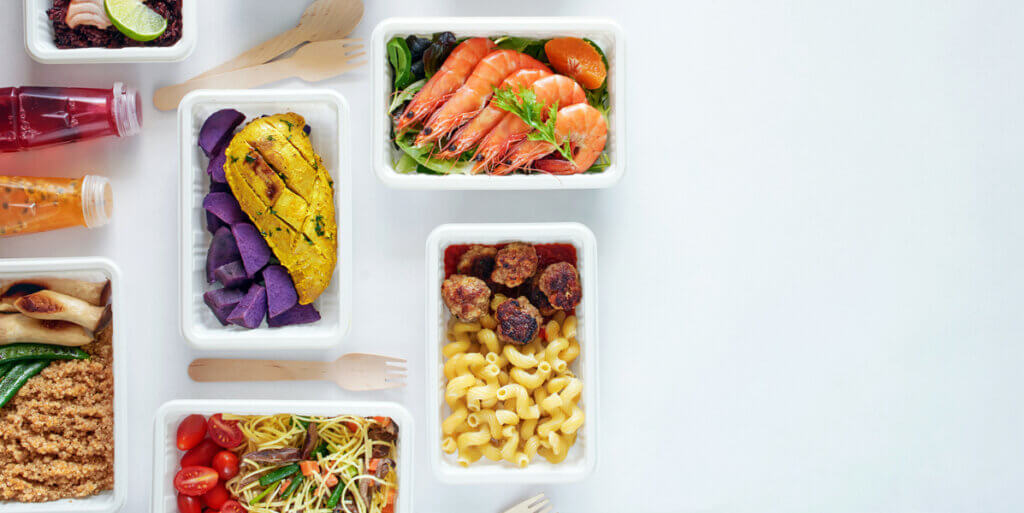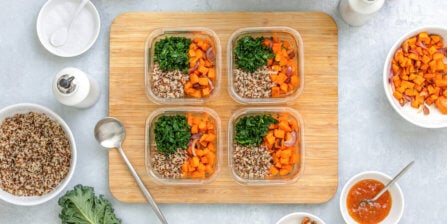Planning & Prep
How to Meal Plan: Step-by-Step Guide to Meal Planning

Quick Answer
How to create a meal plan:
A meal plan and preparation process will vary based on a wide number of factors. Each person or family will have a unique schedule, meal planning goals, family size, and food preferences to accommodate. While some steps of the meal planning process are straightforward, like making a shopping list and purchasing ingredients, these other considerations play an important role in your overall process.
Meal planning is a great habit to get into, but it can be daunting the first time around. This is especially true if you’re planning meals for your whole family. Here are a few tips and strategies to help you get started.
How to meal plan for the week: step-by-step
A good meal plan works around your needs, and that means being realistic about what you can and can’t do. Always be accommodating to yourself and your situation. Try a combination of the following tactics for a balanced, sustainable meal plan.

1. Get clear on your meal planning goals
Your first meal planning step should be getting clear about what you’re looking to get out of this process. Once you have these clear objectives in mind, you can tailor your meal planning toward hitting your goals. There are many reasons that people opt to plan their meals for the week in advance. Some common goals include meal planning to:
- Avoid overspending on unnecessary food items
- Avoid the waste that comes from throwing out unused items that are forgotten over time
- Establish a consistent routine around meals
- Make mealtimes more convenient by having a plan in place or a meal prepared in advance
- Consciously begin eating a more healthy and well-balanced diet
2. Determine a meal planning schedule
Figuring out a strategic meal planning schedule can help you integrate the practice into your work and personal schedule while keeping the practice consistent over time. To get started, consider the following questions to get a better idea of when your meal planning activities should take place:
- What day will you be planning?
- What day will you be shopping?
- What day will you be prepping?
For many, the planning, shopping, and prepping stages will occur all in one day so that the entire meal planning process is knocked out in one go. Many people also choose to meal prep on the weekends to prepare their meals for the workweek. However, these choices can vary based on the individual’s schedule and availability. Whatever you decide upon, having a meal planning schedule in place can take the spontaneity out of the process and introduce lasting consistency.
3. Determine your recipes
The next step involves planning the actual recipes you would like to make for the week. It’s a good idea to come up with a set amount of recipes for the week without actually setting any specific days on which to eat them. This will give you more freedom to choose the meal that sounds satisfying to you each day. Some further considerations for selecting weekly recipes include:
- Plan meals that integrate well with your work, home, and social schedule.
- Plan for days that you may prefer take-out or dining-out options.
- Ask your household for their input and include meals that everyone will enjoy.
- Check your pantry and fridge to see what ingredients you already have to work with.
- Choose some recipes that are familiar and easy to cook.
- Look up new recipes and throw one or two into your plan each week to keep it interesting.
- Plan to eat leftovers for some meals.
For a printable guide and specific recipe ideas, make sure to check out our post on 39 healthy, low-calorie meals.
4. Make a shopping list and purchase your items
Once you have selected your recipes, it’s time to create your grocery list. Start by going through your home inventory, and checking the pantry, fridge, and freezer to see what ingredients you already have. Then go through your recipe list and write down each ingredient you still need to purchase to cook your planned meals. It’s also helpful to determine your grocery food budget using Instacart’s calculator tool.
To save time at the grocery store, group your ingredients by type so that you can work your way through the store more efficiently. To save even more time, consider doing your grocery shopping online by selecting each ingredient you need and scheduling a drop-off or pick-up time that works best for you.
5. Start prepping your meals for the week
Once you’ve purchased all the ingredients you need for the week, it’s time to start preparing your meals.
One way to go about this includes preparing each recipe in advance and portioning them out into their own containers. This gives you a very convenient way to eat your meals throughout the week since they will be ready to go at any time. This option is great for individuals or small households.

Another option includes preparing only some meal elements in advance, leaving the easier parts of the meal to cook on the day of. Cooking the time-consuming elements in advance can make mealtimes more convenient in the upcoming week. Cooking the quicker meal elements on the day you plan to eat can give the meal a fresher taste than refrigerating them for the week. This option is good for larger households who may not have the time or space to cook or portion out each meal in advance.
Tips & tricks for meal planning
Planning and preparing entire meals is great, but you can take your meal planning to the next level by identifying other items that you can use repeatedly in your cooking.
1. Sauces, condiments, dips, and dressings
Get creative with adaptable ingredients. For example, making your own condiments can be a good way to save money and can be used to add flavor to many different meals.
2. Roasted vegetables for days
A large batch of roasted vegetables can go a long way with little prep. Roasted veggies can be used as a snack, ingredients to flesh out casseroles, or even served as standalone sides.
3. Plan your snacking
Your family will most certainly want to snack throughout the week. To fill that gap in your planning, especially if you’re concerned with healthy eating, think of the textures and flavors of your go-to snacks and find healthier substitutes. Like swapping out potato chips for kale chips.
4. Timing your grocery trip
You should make your plan for the week ahead a few days before you need to buy groceries. This gives you time to search for recipes, check on what you have left from last week, and what you’re running low on.
5. Use fresh ingredients first
There’s little worse than seeing fresh produce go bad before you have a chance to use it, so plan to use your freshest ingredients at the beginning of the week. Toward the end of the week, you should be planning meals that allow you to use the longer-lasting items, as well as any leftover ingredients.
6. Buy what’s in season
Fun fact: buying ingredients that are in season is usually cheaper. For instance, when it’s tomato season, buy fresh tomatoes instead of canned ones.
7. Keep an eye out for discounts
At certain times of the year, you’ll find certain items discounted. Try to anticipate these seasonal discounts, and look out for coupons, sales, and discount sections.

8. Set goals for the family
Think about your goals and parameters for your meal plan before you start. For some people, it’s sticking to a budget. Others are based on dietary restrictions or special diets. Everything will be easier if you know what your goals are.
9. Have a good sense of your budget
It’s always helpful to get a sense of your budget when strategizing for meal prep. Whether you’re a solo shopper or planning for the whole family, you can determine a solid estimate for your food budget using our grocery budget calculator.
10. Focus on your weak links
Your meal planning should address the areas where you’re struggling the most. For example, if your mornings are too rushed to prepare breakfast, plan around that.
11. Batch your meals
Build your meal plan around dishes that can be prepared in large batches and eaten across a few meals throughout the week. When you’re cooking, separate your batch into portions for freezing. A more ambitious approach is to make multiple batches of a dish at once to cover several weeks. This is an especially delicious idea for curries and soups.
12. Quick meals
Another cornerstone of your planning should be easy-to-make meals that can be prepared in 20 minutes. This can be as simple as prepping the ingredients for a stirfry in advance and tossing them together into a wok for dinner.
13. Eating out or ordering takeout
Very few people cook every meal for themselves, so there’s no shame in building “cheat meals” into your meal plan. Eating in a restaurant or ordering a takeout pizza can give you a break, as well as give your family a ritual to look forward to.
14. Take your time and enjoy yourself
If you enjoy cooking, you’ll probably be interested in meals that require more time to prepare, or that involve a larger number of ingredients. Just make sure that more challenging meals don’t leave you with too many ingredients leftover that you can’t use. If you’re an especially ambitious cook, pay attention to how many ingredients these more complicated meals require. As part of your planning, think about how you’re going to incorporate the more specialized ingredients in future dishes.
15. Tweak your classics
As you build up your repertoire of dishes, you don’t have to let things become mundane. If you make chili every week, for example, you can keep things interesting by adding new flavors. If you cook a new or more challenging dish every week, you may have leftover ingredients that you don’t know how to use. Why not throw that herb or spice into a soup, salad, or sauce for something new?

16. Conduct a weekly review
Make a habit of starting your meal planning by reviewing the previous week. What worked, what didn’t, and what can you do better next week? Perhaps you want to introduce more fresh fruit to your diet, or want to plan for several days a week when you don’t eat meat. Use a journal to keep track of your own thoughts, as well as feedback from your family, or any notes on allergies.
17. Use what you already have
Before you make your plan each week, check your fridge and pantry to identify any items you need to use. You can then focus your choice of meals for the next week on making sure nothing goes to waste. Have a few recipes up your sleeve that allow you to use excess ingredients or anything that is close to expiring — casseroles, pizzas, salads, and one-pot dishes are all handy.
18. Write it down
Whether you use a pen and paper, a note-taking app on your mobile or computer, or a spreadsheet to record data like recipes, quantities, prices, and more, your meal plan isn’t a plan unless it’s written down somewhere. The best solution is the one that you find easiest to look at and are most likely to use. You can even keep it classic and buy recipe cards to write down what you need.
19. Organize your meals
If you’re preparing meals in batches, you’re going to need a system to keep track of everything. You can use color-coded labels, or better yet, color-coded containers, to organize and label your meals. For example, a certain color might indicate whether a meal is breakfast, lunch, or dinner, or correspond to the days of the week.
20. Raise your appliance game
Invest in appliances that will complement your meal-planning goals. Whether you’re using a slow cooker or instant pot, a toaster oven for secondary roasting or baking, or defrosting and reheating meals using a microwave, devices that can help accelerate food preparation can make a huge difference.
21. Add to your list on Instacart throughout the week
As you run out of items or need additional supplies, simply open the Instacart app and add the item to your cart– then check out whenever you’re ready!

Resources Related to Meal Planning
If you liked this guide and you’re looking for more helpful content, make sure to check out the following:
- What is Meal Planning and Why is It Important?
- 25 Easy Meal Planning Ideas for Families + Tips
- 20+ Easy & Satisfying Meal Prep Ideas
Meal plan with Instacart
For most people, getting used to meal planning involves a lot of trial and error. Your patience will pay off, but it also helps if you lean on all the resources at your disposal. While you plan out your family’s meals for the week ahead, you can save hours by browsing Instacart to make sure all the items you need are available at a grocery store near you.
Have all your meal-planning ingredients sent directly to your home, hotel room, or vacation rental. Just add everything you need to your cart and choose same-day delivery or pick-up at checkout. Less time shopping – and less time cooking – means more time with those you love.
Most Recent in Planning & Prep

Planning & Prep
37 Care Package Ideas: From “Get Well” to “Just Because”
It’s always nice to show some extra appreciation for your loved ones. Whether you want to support a sick friend or a neighbor who had their first child, a care package is the perfect way…
Jan 30, 2025
Planning & Prep
Average Grocery Cost per Month: The 2025 Breakdown
The average grocery cost per month, per person, in the United States is roughly $350 for adults between 19 and 50 years old in a four-person household. This estimation depends on multiple factors, such as…
Dec 23, 2024
Planning & Prep
33 Shocking Global and National Food Waste Statistics (2025)
Did you know nearly 30% of the food produced globally is never eaten? This staggering food waste statistic highlights the alarming issue of uneaten food — a problem with environmental, economic and social consequences. Food…
Dec 23, 2024

 17 Grocery List Categories to Make Shopping Easy
17 Grocery List Categories to Make Shopping Easy  How to Meal Plan: Step-by-Step Guide to Meal Planning
How to Meal Plan: Step-by-Step Guide to Meal Planning  How To Read Food Labels: Guide to Nutrition Labels
How To Read Food Labels: Guide to Nutrition Labels 

